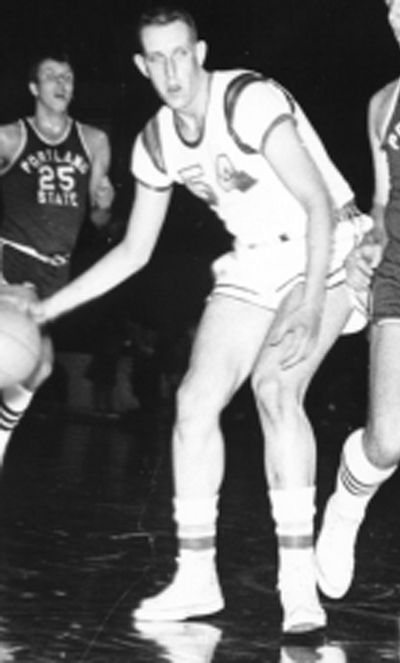Guest column: ‘Get the ball to Leech’

About three years ago at a Gonzaga basketball alumni game in Spokane, I told Gary Lechman (we called him “Leech”) that whenever the subject of Zag basketball would come up in conversations with my friends I would tell them, tongue in cheek, the reason he became a leading rebounder at Gonzaga was because he played against me in practice.
Leech smiled and politely chuckled at my lame joke, but at the same time, I am sure he was thinking: “Think so, eh? How about you and I go one-on-one, right now?”
In reality, I spent more time on the practice floor with Leech than I did in the game. My call to duty from the late coach Hank Anderson was usually to give Leech a brief rest or when we were leading by 25 points with two minutes left in the game. Nonetheless, that gave me a front-row seat to watch him in action.
He was a powerful force on the hardwood. His style of play was not Michael Jordan-esque – there are no photos of him making high-flying dunks – but more like DeAndre Jordan or Kevin Love, grinding it out game after game. He was a concrete retaining wall when blocking under the basket and had a high basketball IQ long before that term became part of the game’s vernacular. He also had a nose for the ball with an uncanny ability to anticipate which way it would bounce off the rim. That led to a lot of tip-ins and put-backs.
Leech’s play was also deceptive. I would often come away from games thinking he had a “good” night. Not many of his moves would have made the ESPN highlight reel, had there been an ESPN in those days. But when the box score was later circulated in the locker room that “good” game became a “wow” game: 21 points, 12 rebounds one night; 26 points, 18 rebounds the next. Double-double after double-double after double-double. Coach Anderson’s game strategies were often just five words: “Get the ball to Leech.”
I had always remembered his rebounding statistic: 910 career rebounds, No. 3 in the Gonzaga record books. Three-year college careers were the norm in those days because freshmen could not play varsity basketball. What makes this more remarkable is Leech, who played center most of the time, stood just 6-foot-3 and always had to look up at his defenders.
After I received news of Leech’s death, I went back to the record books to refresh my memory of his other achievements. Total points: No. 16 with 1,452 points, again in just three seasons. Career field-goal percentage: No. 6 at 57.9. Leech ranks No. 6 with 354 total rebounds in a single season (1966-67) which included 26 games. That equates to 13.6 rebounds per game. As a frame of reference, the leading NCAA Division I rebounder last year averaged 11.8 rebounds per game. He averaged 23.7 points per game (No. 6) his senior year.
Leech was also a member of Gonzaga’s 40-point club, knocking down 41 points against Idaho State in March 1967. All told, his name appears in the record books 10 times. That is what you call a legend.
Rest in peace, Leech. I consider it a privilege and honor to have stood in your shadow.